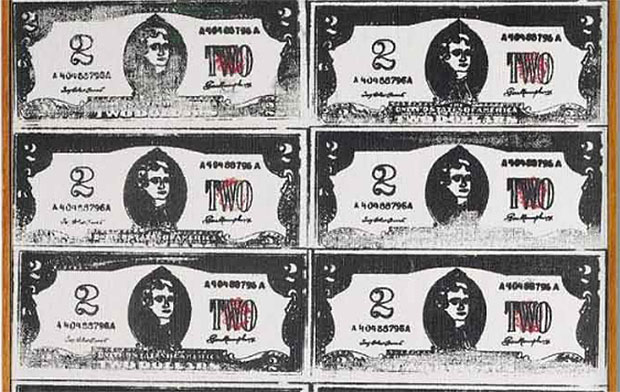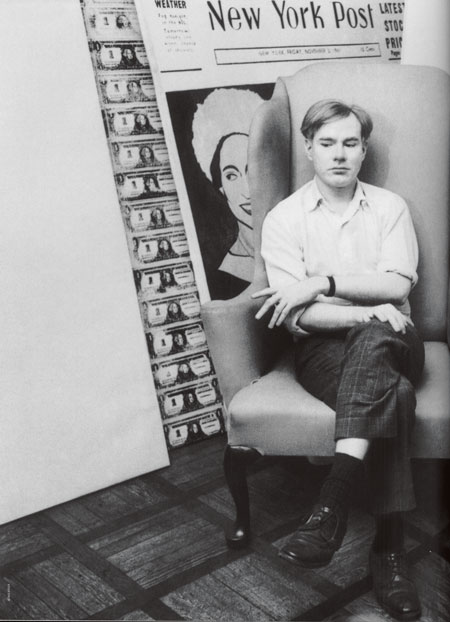
From Book to Bid – Andy Warhol’s Two Dollar Bills
It wasn’t Marilyn Andy silkscreened first but these dollar bills – they're at auction this month for a cool £6m
Do you know what Andy Warhol depicted in his first screen print? It wasn’t a soup can, or the face of Marilyn Monroe. Indeed, it is one of the few images commercial printing companies will often think twice about reproducing, forcing Warhol to draw the image out by hand before his printers would feel comfortable making copies. However, this didn’t stop this image becoming the most extensive series to date.
During the early months of 1962 Warhol set about printing his first dollar-bill works, one of which goes up for auction at Christie’s post-war and contemporary art evening auction in London on 29 May.
Carrying an estimate of £4,000,000 – £6,000,000 ($5,656,000 - $8,484,000), Two Dollar Bills (Fronts) [40 Two Dollar Bills in red] has certainly proven to be a remarkably good cash investment. However, as editors Georg Frei and Neil Printz explain in volume one of our Warhol Catalogue Raisonné, the bills also represent a key turning point in the artist’s career.

“Warhol’s first silkscreen paintings, made in early 1962, were based on the front and back faces of one- and two-dollar bills. Two anecdotal versions of the subject’s origins have appeared in the Warhol literature. Both tend to mythologize the origins of these paintings and involve transactions that mirror the subject.
“One account details the suggestion to an art and antiques dealer Muriel Latow and was first cited in Calvin Tomkins’s 1970 essay “Raggedy Andy”. A similar version was told by Warhol’s friend Ted Carey. According to Carey, Warhol was looking for ideas about what to paint, and Latow charged him fifty dollars for the idea: “Muriel said, ‘What do you like more than anything else in the world?’ So Andy said, “I don’t know. What?’ So she said, ‘Money. The thing that means more to you and that you like more than anything else in the world is money. You should paint pictures of money.’ And so Andy said, ‘Oh, that’s wonderful.’”
“A different account credits the idea of painting money to Eleanor Ward. According to Ward and Emile De Antonio, Ward had promised Warhol a one-person exhibition at Stable Gallery if he would paint her a lucky two-dollar bill.
“Nathan Gluck recalled that Warhol “had decided to paint money. And he was not about to draw rows and rows of money. And he couldn’t think of what to do, and then he remembered the fellows at Tibor Press. He called them up and asked them if they would make a silkscreen of money. And I think they said no, but if Andy made a drawing, they would make a silkscreen of the drawing. So, Andy ran off and made is serially like that. From then on, I think he realized that he could use the silkscreen.”
Warhol’s later silkscreens were largely reproductions of photographs, making this early dollar work an interesting, chimeric blend of his earlier illustrative work and his later mechanically reproduced art. While £6m sounds like a lot to pay for $80 worth of fake bills, the eventual owner will end up with a both an impressive early Andy work, and a little bit of art history.
You can see the work Christie’s is offering for sale on page 136 of our Warhol Catalogue Raisonné Volume One, with provenance details on page 147; meanwhile, for greater insight into this important artist's work, take a look at our other Warhol books, here.
![Detail from Two Dollar Bills (Fronts) [40 Two Dollar Bills in red] (1962) by Andy Warhol. Image courtesy of Christie's](/resource/detailwarhol2dollarbills.jpg)